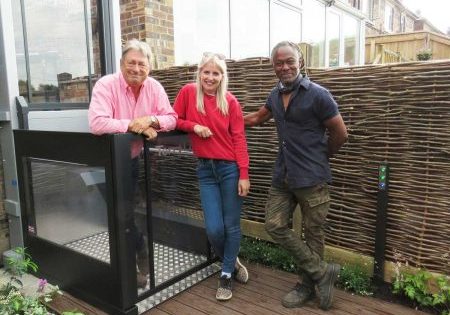Considerations in preparing for retirement … or not
The “What’s my number?” question was a question originally posed to me some years ago by a guy called Adam Young, one of the top team members at Jarrovian Wealth, and it’s one that I have used repeatedly with clients since.
The “What’s my number?” question is really about how far you want to take your business in order for it to deliver the lifestyle you want, now and in retirement.
However, there is probably a question that needs to proceed the “What’s my number?” question and that is:
- Are you passionate about your business? or
- Are you passionate about the lifestyle that the business delivers?
Because, if you’re passionate about your business you’re likely to stay in it for longer and maybe never retire, in which case the “What’s my number?” question might be completely immaterial.
Additionally, given that you are building a business, you are likely to be financially “savvy,” so the answer to the question is often a function of a number of different income streams, which may have built up during your entrepreneurial life and might include:
- Sale of the company
- Income from any ongoing involvement in the company
- Whether or not you have purchased the company premises (and will continue to rent them)
- Income from any other properties (buy to lets, holiday homes, etc.)
- The size of your pension
- More recently, things like cryptocurrency investment
- The expected state pension (Circa £15k pa for a married couple)
Obviously, you may want to be retired for a long time (fortunately, I love work, so I don’t expect to be … but I might scale back, which is why I’m building my team), and there is “the rule of 4%.” The 4% Rule is a practical “rule of thumb” that suggests you can withdraw 4% from your retirement funds each year without adversely depleting the pot. The objective is to retain a steady income stream while maintaining an adequate overall balance for future years, the idea being that withdrawals will consist primarily of interest and dividends.
The “rule” suggests that in adopting this approach, the pension pot is likely to last your lifetime. Having said that, there are some challenges with the 4% rule. The majority of which query whether or not 4% is too much, given the investment climate over the last few years.
But, as a business owner and entrepreneur, you are likely to have an asset that others don’t, and that is your business, which has (a sometimes significant) value.
The Value of a Business
So, what is a business worth … how do you calculate that?
Some time ago I did a master’s degree in business administration, part of which involved an exercise where we had to value a series of different businesses using a variety of methods, all of which had very posh names: the discounted cash flow method, the internal rate-of-return method, the price earnings (P/E) method, to name but a few.
The conclusion to the exercise was that the value of any business is worth what somebody wants to pay for it! This is distinctly unhelpful! The bottom line is all of these fancy metrics sometimes don’t really account for much.
Despite the vagaries of the methods of valuation, there are things that you can do to increase the value of a business.
But What Can You Do To Increase Value?
There are a number of ideas that can be employed to make the business more valuable, and these include:
- Diversifying your customer base
- If you’re big in one sector — councils, care homes, property managers, blue chips, hospitals — develop some of the other sectors.
- Buying other businesses
- You’ll know as well as I know lift companies that have been bought by the big companies. You could do the same.
- Making yourself redundant
- I can think of two lift companies both sold to the same corporate at a similar time, but the values were significantly different, simply because the directors of one company had built their team around them, making themselves redundant.
- Building repeatable income
- Clearly for lift companies, this is a service base, but it’s also about effectively mining the repair base.
The conclusion to the exercise was that the value of any business is worth what somebody wants to pay for it! This is distinctly unhelpful! The bottom line is all of these fancy metrics sometimes don’t really account for much.
We have all heard horror stories of companies that have had blinding success, but with just one customer taking the lion’s share of the company’s turnover, or perhaps having a very friendly relationship with just one person who is their biggest client. The customer then chooses a different supplier, or that one person leaves. The company then collapses because it was built on a bed of sand. In an ideal world, to extract maximum value from a company sale, no one client should make up more than 10% of a company’s income.
We have a number of clients, and know a number of others, that have gone on buying sprees, some with their own money, some with venture capital. One example, which might chime with lift companies, was a fire and security company big in the South with fire services and weaker in the North with security services that sold out to a major (household name) trade company who promptly bought another company big in the North with security clients and weak in the South with fire clients. The two parts of the business complemented each other beautifully, and the new owners merged the companies, creating a bigger, more balanced company which, a couple of years later, after the various wrinkles had been ironed out, was sold again for many, many times the value of what the original companies had been purchased for. The guy we knew, the managing director of the original southern company, was impressed and enraged in equal measure. Drawing cash from his own personal bank account he promptly set up again so he could take advantage of this “better” and more lucrative approach.
Businesses are worth significantly more to someone else if you can honestly say (and prove): “I don’t do much work. I spend most of the time on the golf course,” rather than “I work damn hard in this business, typically do 80 hours a week.” The first comment would indicate the business runs itself and whatever you take from the business can be added back in as profit. The second statement means the business is entirely dependent on you, which means the value is wrapped up in you. So, if you leave, there’s likely to be a problem. In most businesses, the bottleneck becomes the owner. The bottom line is if you want to increase the value of the business, build it so that it works without you. Essentially, you need to build the team around you.
The most valuable businesses are those that produce an ongoing, repeatable and predictable income stream. I was at a conference earlier in the year and a guy named Kevin Whelan, who goes by the name of “The Wealth Coach,” suggested that a business with repeating and predictable income was typically worth more than eight times a “normal” business.
Bringing It All Together – What It Means
The business sale, or ongoing revenue derived from it, is likely to be your biggest asset. However, along the way, you may have also collected a veritable stable of other assets. At some point, the likely value or revenue derived from these assets should be calculated in order to understand the current and likely future position.
We recently did some work, alongside the team at Jarrovian, with a small lift company with two directors, both of whom were relatively young. They had a figure in mind for what they would like to retire on. In this case, it was an annual income value.
We did some “fag packet” calculations:
- Current pension assets and likely growth rate
- The impact of future pension contributions
- Current ISA assets and anticipated growth rate
- The income from two buy to let houses
Given their age, these guys were some way off from retirement, but simply undertaking the “fag packet” calculation allowed them to appreciate that if they retired tomorrow, their current assets already delivered an income beyond the number they had in mind! They were astonished!
At this point, two scenarios at different ends of the spectrum usually emerge:
- Relax, give it all up now and wander off into the sunset. … “Thank you very much, job done.”
- Think “Wow!” Take a deep breath and say, “If we’ve got our bases covered already, what else can we do?”
The second option can, potentially, turbocharge your ambition, allowing you to take more risks knowing that your backside has already been covered.
However, we would, as we did in this case, indicate a note of caution and that is: house prices have been known to drop 30% as has the stock market! So, in this instance, whilst they have taken the turbocharged option, they have also realised they need to build in a “margin of safety.” This margin of safety will be the focus for the next few years.
The point is, undertaking an exercise like this will allow you to either breathe a massive sigh of relief, or, alternatively, it may stoke further the fires of your ambition. There is no right or wrong answer.
What’s Next? A Word of Warning
Roll on boredom.
If selling the company is the answer, or indeed, prior to withdrawing from it and letting somebody run it with you taking an income, think long and hard prior to signing on the dotted line. We think you need to be very clear about what you are going to do next. There are a lot of very bored, rich entrepreneurs with nothing to do. Depending on your age, you also need to account for the impact on your kids. In a number of instances, the kids of “sold out” entrepreneurs go off the rails. They see their parents kicking back, going to the golf course, doing nothing much and think they’re entitled to do the same! It can provide a toxic role model.
Apologies to the golfers amongst you, but the American writer Saul Bellow wrote, “Retirement is an illusion. Not a reward but a mantrap. The bankrupt underside of success. A shortcut to death. Golf courses are too much like cemeteries.”
Conclusion
I think (clearly, you are allowed a different opinion) that it is a great idea to take stock of where you are now and think about the assets that you have accumulated and how they will serve you in the future.
I also think the qualities that make entrepreneurs successful are the same that make retirement extremely difficult. We get identity and purpose, we are part of a tribe, we have a structure and a sense of achievement. … That’s an awful lot to give up.
As somebody once said, “When you retire, you go from ‘who’s who’ to ‘who’s that?’” Not a great epitaph. So, on the downside, there are no shortage of challenges facing society, so there are plenty of places, should you wish to retire (once you have established your number), that you may wish to apply your experience and skills.
Alternatively, like one of our longest-served clients and good friend of mine in the industry (you know who you are, Reg) … you just might want to do it all again. As a report commissioned by Coutts Bank, “Beyond the first business: the myths, risks and rewards of being a serial entrepreneur,” shows: What matters most is not making a shed load more money (They didn’t say “shed load” that’s my vernacular), but making a meaningful contribution to the growth of an organisation and the personal lives of people within it, the pride and satisfaction derived from helping others and building something worthwhile.
Disclaimer: Clearly, Statius are management consultants, not financial advisors. We will have an opinion on some of the approaches our clients adopt, but detailed financial advice needs to come from an appropriately qualified financial advisor.
Get more of Elevator World. Sign up for our free e-newsletter.










